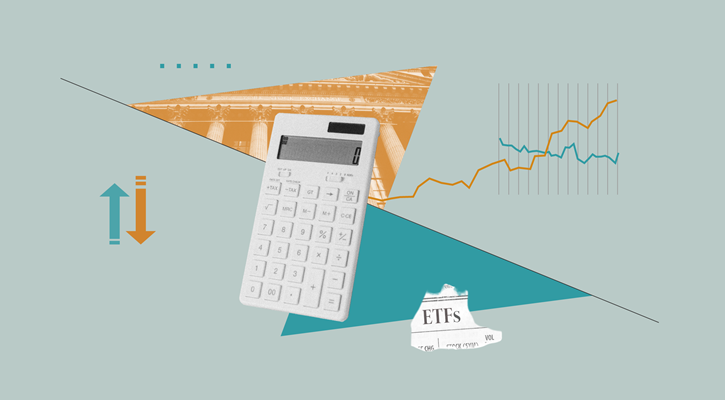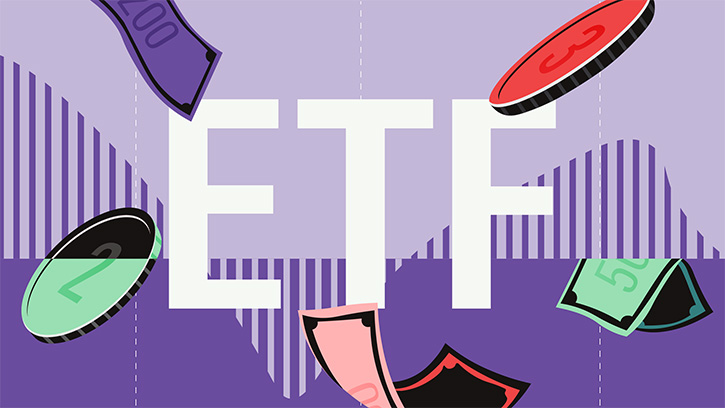
Exchange traded funds (ETFs) have become the financial instrument of choice for an increasing number of investors, both institutional and private. Transparency, ease of trading, tax efficiency and low costs are some the characteristics driving their success.
Fees, in particular, are a key trait in the selection process. But when it comes to choosing an ETF, particularly when analysing replicants that track the same or nearly the same benchmark, it is important to look beyond the stated fees and take a more holistic approach to assessing the total cost.
The cost of an ETF can be roughly divided into two parts: holding costs and transaction costs. The relative importance of the two components will vary depending on the investor’s time horizon and the amount of money to be invested. Ownership costs include fees and a variety of other factors that affect the relative performance of the replicated benchmark. Transaction costs include commissions and bid/ask spreads.
In general, holding costswill be the most important component of the total cost for long-term investors, as they are by definition incurred throughout the holding period. Transaction costs, on the other hand, will be more important for investors with shorter time horizons, particularly in cases where they are investing large sums of money.
Ben Johnson, head of ETF research at Morningstar, compiled a list with the aim of identifying the main components of the total cost of a listed replicant.
Holding Costs
Commissions are generally the most important component of ownership costs. They are also the most stable and readily available part for investors. But there are also implicit costs to consider, arising from a variety of factors. These are listed below.
Sampling
Some ETFs, especially those that replicate indices containing small and less liquid securities, opt for sample replication. In practice, the fund buys a set of securities chosen to create a portfolio that is sufficiently similar to the benchmark – but with a smaller number of components (usually the most liquid) in order to optimise liquidity and transaction costs. Although sample replication has some obvious advantages, it creates a potential source of tracking difference as the fund deviates from the performance of its benchmark.
Index Portfolio Turnover
Index turnover costs reflect another potential source of tracking differences. Bankruptcies, mergers and acquisitions are some of the most common causes of changes in a standard market capitalisation-weighted index portfolio. The costs associated with realigning the ETF to reflect these changes could cause the performance between fund and index to deviate.
Treatment of Dividends
The timing and tax treatment of dividends are another potential source of deviation between the return of the ETF and the replicated benchmark. In most cases, by not reinvesting the earnings from securities in the fund itself, dividend-paying ETFs keep these earnings in the form of cash until the scheduled ex-dividend date. This practice (called cash drag or dividend drag) can potentially create a negative difference between the replicant’s performance and that of the index during bullish market phases, since dividends are not reinvested in the fund. However, the reverse is also true. That said, in many cases, ETF issuers can utilise this liquidity by investing in futures contracts to maintain exposure to the market and thus ensure a tight replication. Not all funds, however, can employ this technique.
Also not to be underestimated is the different tax treatment of coupon-distributing ETFs. The distribution of the dividend in fact entails a double taxation of the investment, one on the appreciation of the instrument and another on the distribution of the dividend – without the possibility of offsetting the two. All this backfires on the investor in a situation where the ETF is at a capital loss but still pays out coupons. For example, in the case of selling a fund at a loss, the capital loss cannot be offset against the gains received in the form of dividends.
Securities Lending
Securities lending, on the other hand, can be a source of income for ETFs, which in this case can compensate to varying degrees for the costs they face. The degree to which this activity affects them depends on a variety of factors. For instance, small-cap funds generally generate more revenue from securities lending as there is more demand from short sellers to borrow small-cap securities.
Tracking Difference VS Tracking Error
All of the above items combine to form the difference between the performance of the ETF and the performance of the replicated index. The most intuitive is the tracking difference, i.e., the mere difference between the two items. Another measure often used to analyse the behaviour of an ETF is the tracking error, which measures the standard deviation of the difference between the fund and index performances over time.
Transaction Costs (Trading Costs)
While the costs of ownership are more or less fixed and linked to owning shares in an ETF, transaction costs are only incurred when making a purchase or sale transaction. One of the most explicit of these costs is the commissions to be paid to brokers for making trades. By now, in truth, there are quite a few trading platforms that allow transactions to be carried out at very low, or even no cost.
Then there is the bid/ask spread, also known as the bid/ask price, i.e., the difference between the best buying price and the best selling price of a security (or a share in a fund) offered by market makers on the market, who then match supply and demand. This difference represents their remuneration.



























